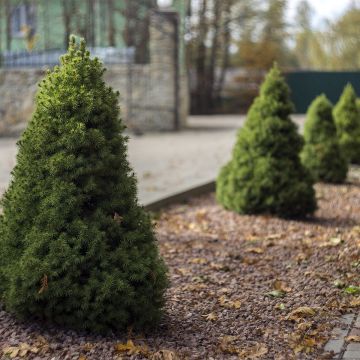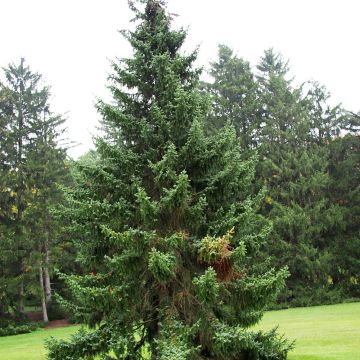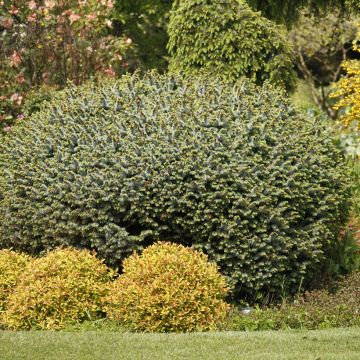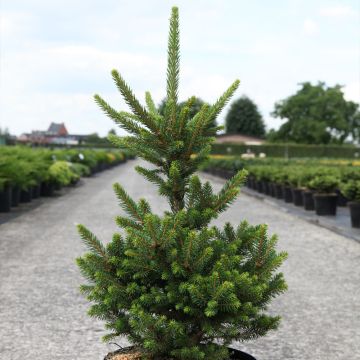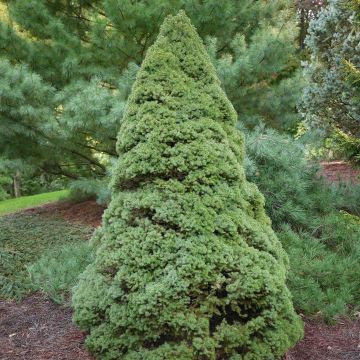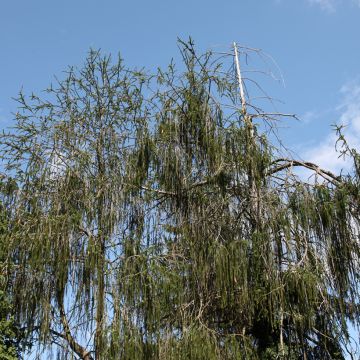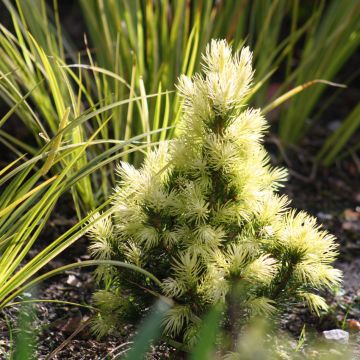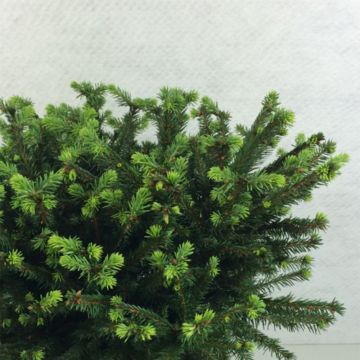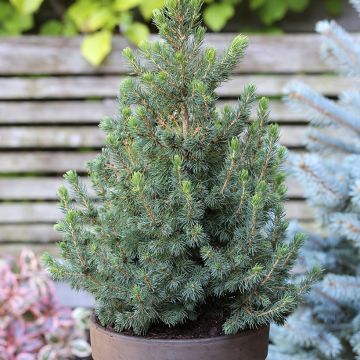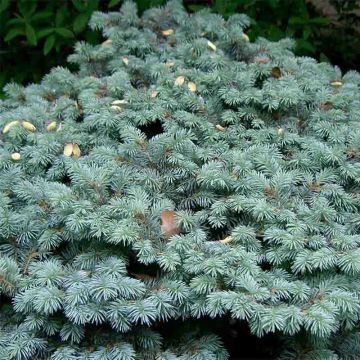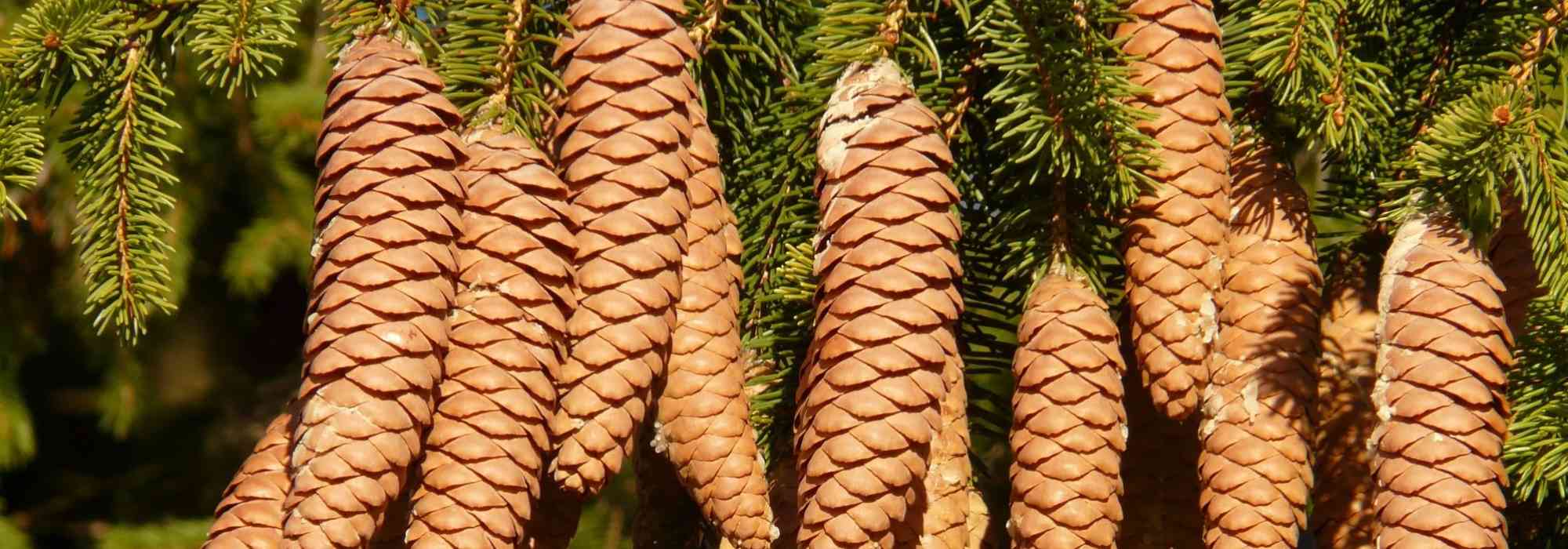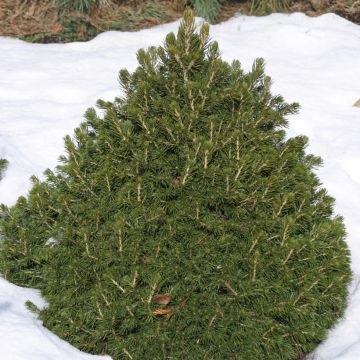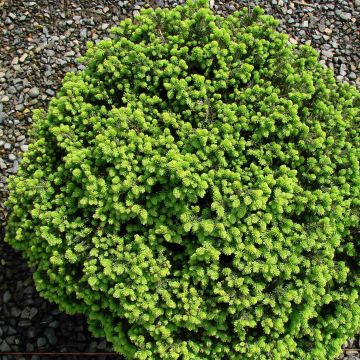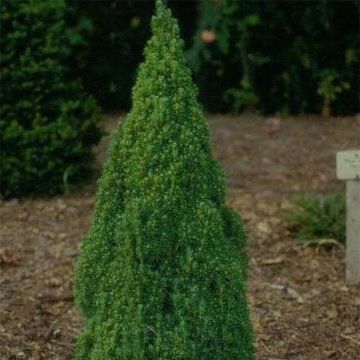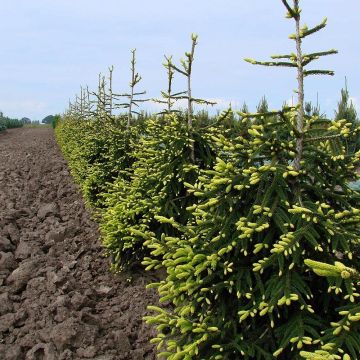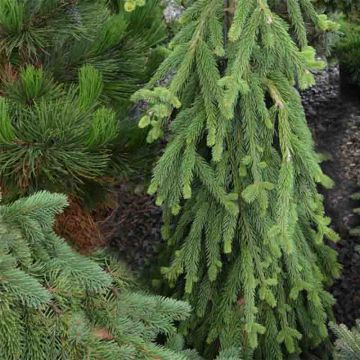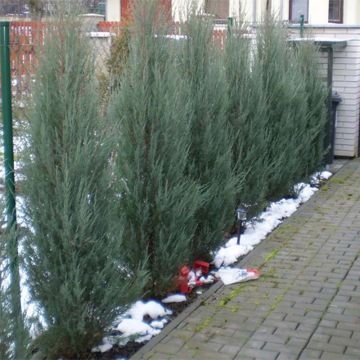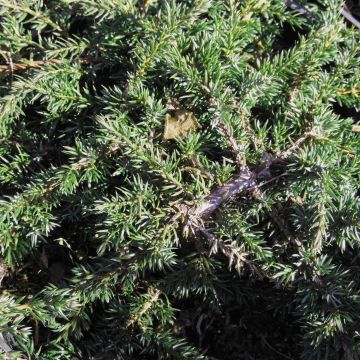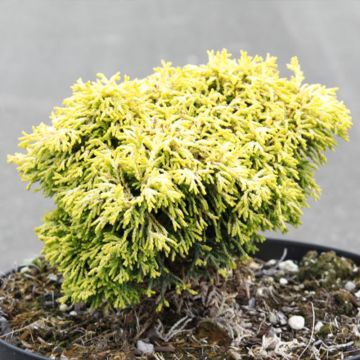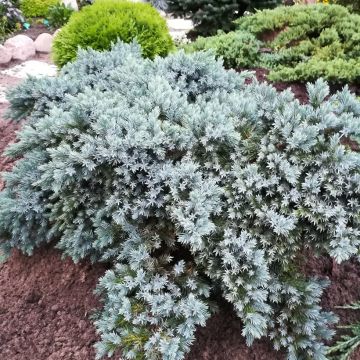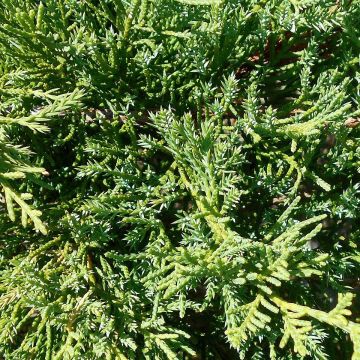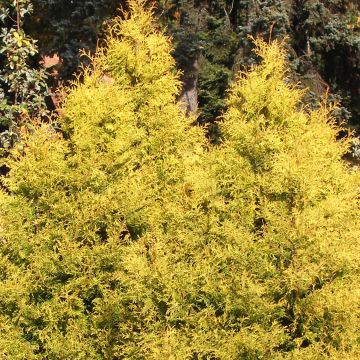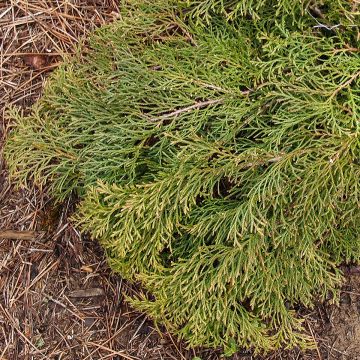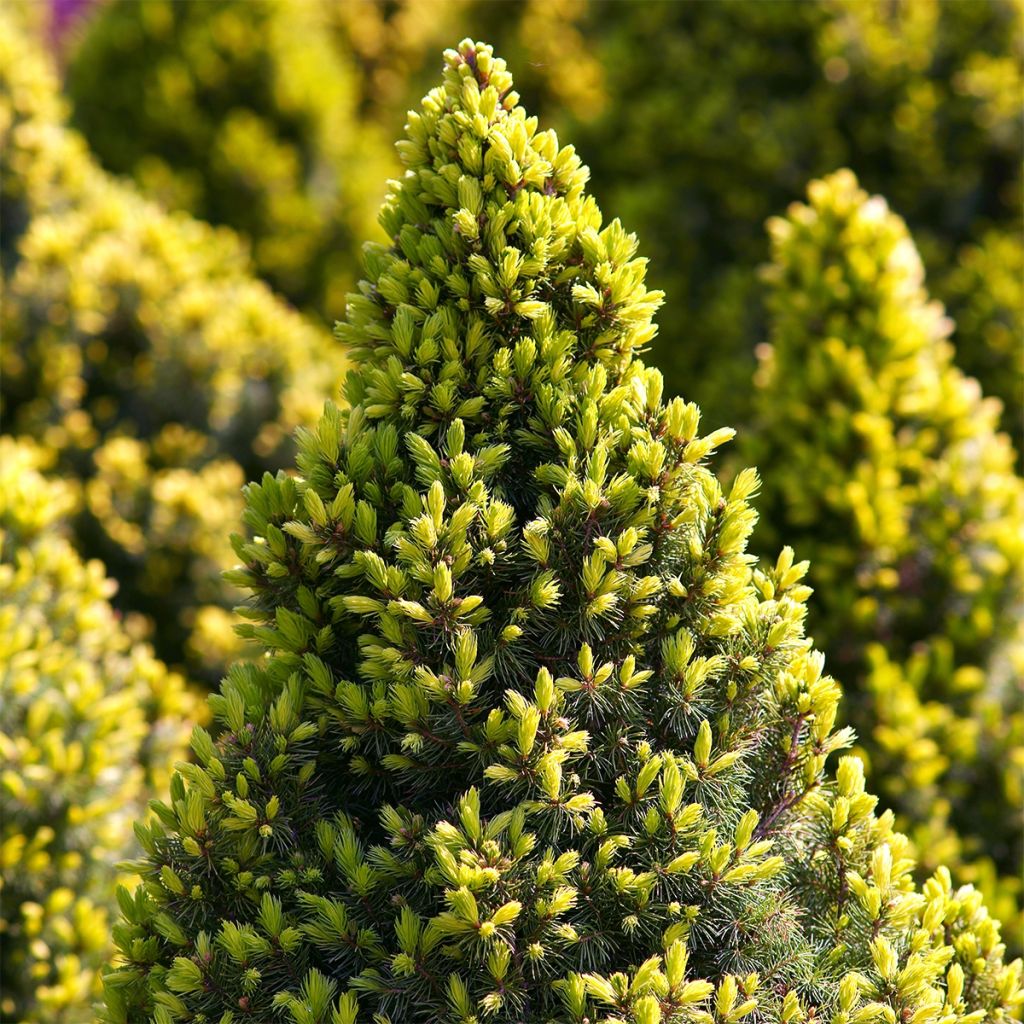

Picea glauca Sun on the Sky - White Spruce
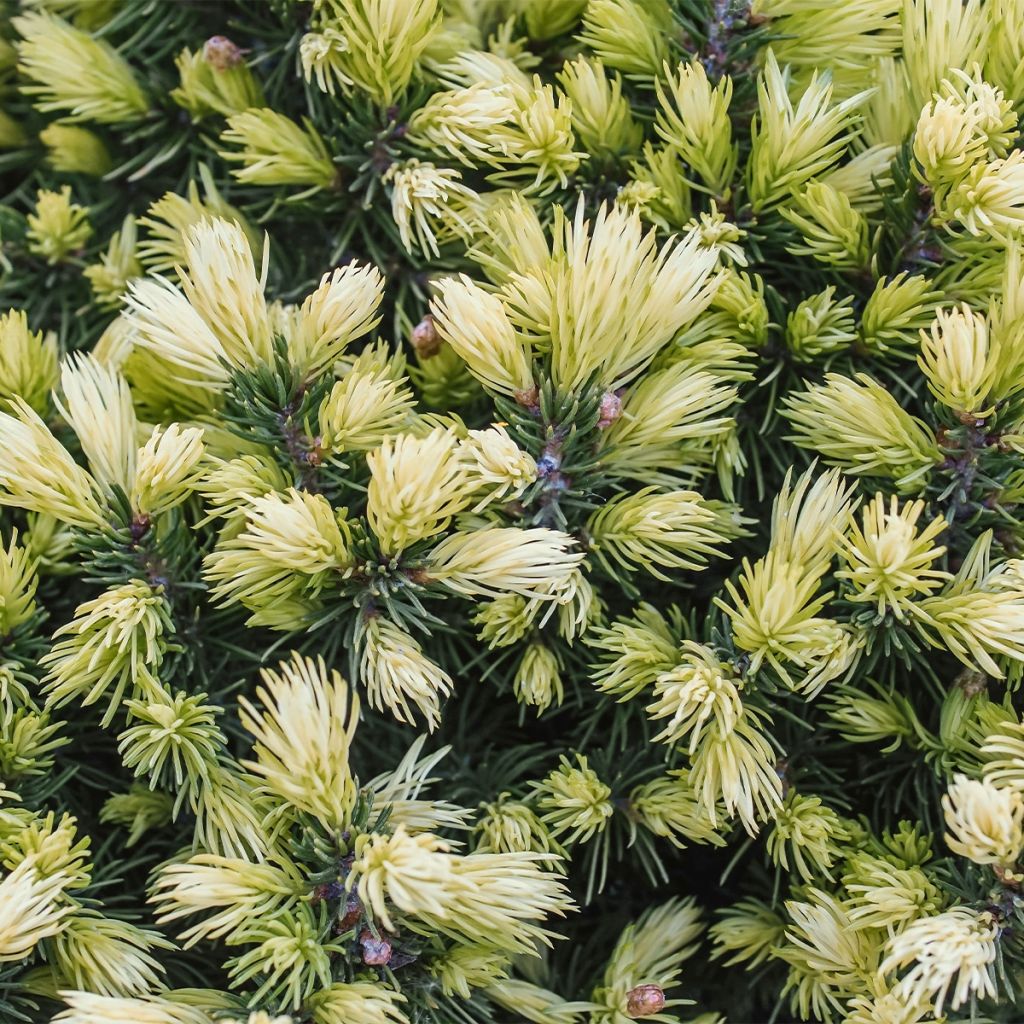

Picea glauca Sun on the Sky - White Spruce
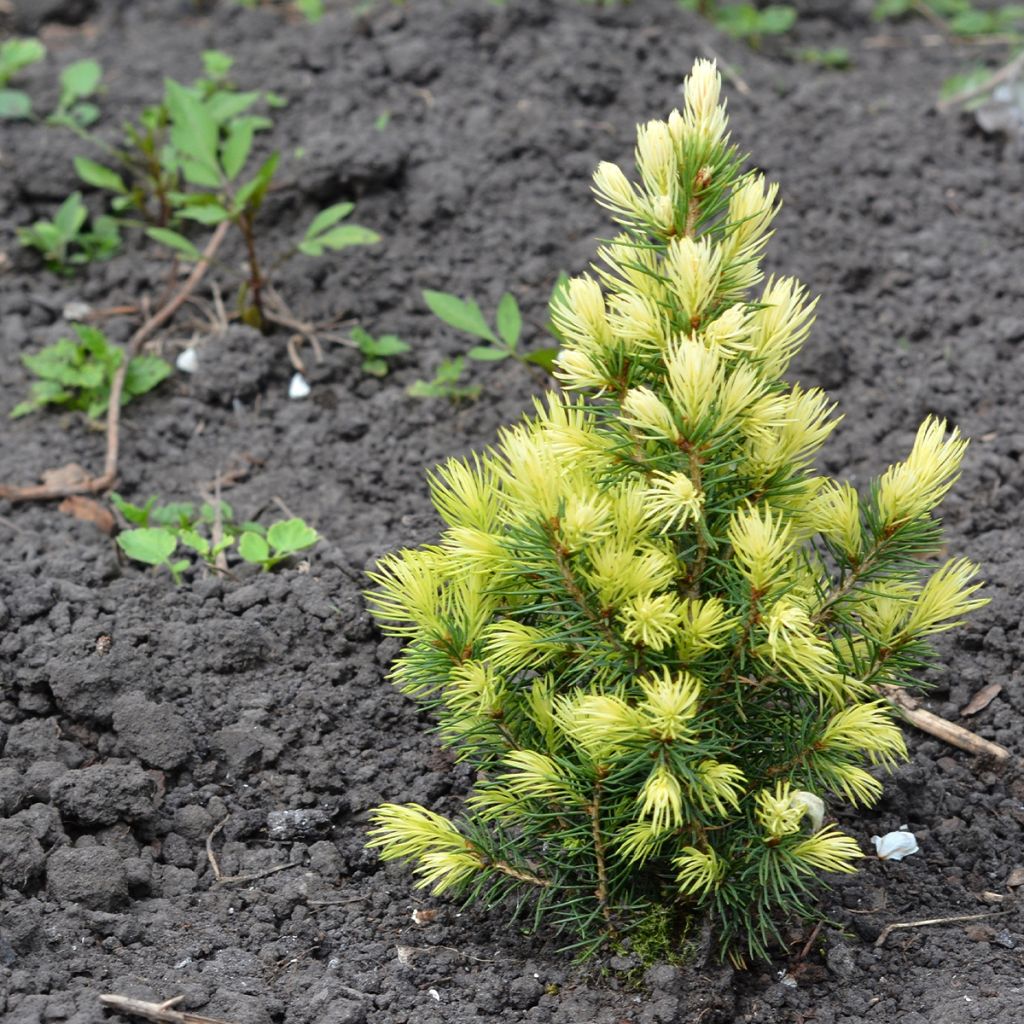

Picea glauca Sun on the Sky - White Spruce
Picea glauca Sun on the Sky - White Spruce
Picea glauca Sun on the Sky
White Spruce, Canadian Spruce, Skunk Spruce, Cat Spruce, Black Hills Spruce, Western White Spruce, Alberta White Spruce, Porsild Spruce
Special offer!
Receive a €20 voucher for any order over €90 (excluding delivery costs, credit notes, and plastic-free options)!
1- Add your favorite plants to your cart.
2- Once you have reached €90, confirm your order (you can even choose the delivery date!).
3- As soon as your order is shipped, you will receive an email containing your voucher code, valid for 3 months (90 days).
Your voucher is unique and can only be used once, for any order with a minimum value of €20, excluding delivery costs.
Can be combined with other current offers, non-divisible and non-refundable.
Why not try an alternative variety in stock?
View all →This plant carries a 24 months recovery warranty
More information
We guarantee the quality of our plants for a full growing cycle, and will replace at our expense any plant that fails to recover under normal climatic and planting conditions.
Would this plant suit my garden?
Set up your Plantfit profile →
Description
Picea glauca 'Sun on the Sky' is a dwarf variety of white spruce forming a magnificent small bush with a perfectly conical habit. Its dense foliage is composed of short and erect, bluish-green needles during summer. In spring, the young shoots have a buttery yellow hue, transcending its usual appearance. Its slow growth and limited development make it suitable for rock gardens, provided that the soil retains some moisture, as it does not like drought. It will also be well placed in a Japanese or contemporary garden, where its well-defined architectural form will be a real attraction.
Picea glauca, also known as White Spruce or Glaucous Spruce, is an evergreen conifer native to Canada. It belongs to the Pinaceae family, like Cedars, Firs, Pines, and Larches. In its natural environment, it grows slowly, and has a quite variable habit depending on its habitat, but is usually conical or pyramidal with a broad base. This tree can reach a height of 25m (82ft). This species is traditionally used for paper production. It can live for many years (200 years or more).
The 'Sun on the Sky' variety, derived from this species, is a dwarf form with a compact, conical habit. Its growth is slow; it will reach about 1m (3ft) in height with a width of 50cm (20in) after 10 years, which is practically its adult size. It produces short, dense branches covered with fine, short, prickly needles, with a slightly bluish-green colour. In spring, the young shoots display a particularly bright buttery yellow colour. Covering the entire surface of the bush, these young yellow needles give it a completely different appearance than the rest of the year, adding to the aesthetic appeal of its sculptural habit.
Very hardy, tolerating extreme cold down to -40°C (-40°F), this small white spruce grows in acidic to neutral soil, retaining some moisture but well-drained. It can withstand short dry periods. Its root system is shallow, highly branched, and spreading, making it difficult to transplant when mature, and particularly sensitive to wind (for larger specimens).
With its attractive conical habit, reduced development, undemanding nature, and ease of cultivation, it is ideal for rock gardens and container terraces. In the latter case, regular watering should be provided, especially in summer, as the conditions in pots are more challenging than in open ground. In open ground, it thrives in many situations, as long as the soil is well-drained and not too chalky. This conical plant goes well with large stones, geometric lines, and masonry works, and it will be particularly well placed in a contemporary garden, where its architectural nature will be enhanced. In this context, associate it with topiary plants. Play with colour combinations by planting alongside shrubs with changing colours, such as the aptly named small Berberis thunbergii 'Admiration', with purple foliage edged in yellow that turns to orange-red in autumn. In acidic soil, also bet on Pieris japonica 'Little Heath', a Japanese Andromeda with pink spring shoots that will contrast well with the yellow of 'Sun on the Sky', then with summer foliage edged in white that will blend perfectly with the bluish-green of our little spruce. And to cover the ground at its feet, a Juniperus horizontalis 'Blue Chip' with bluish foliage will have a great effect.
Picea glauca Sun on the Sky - White Spruce in pictures
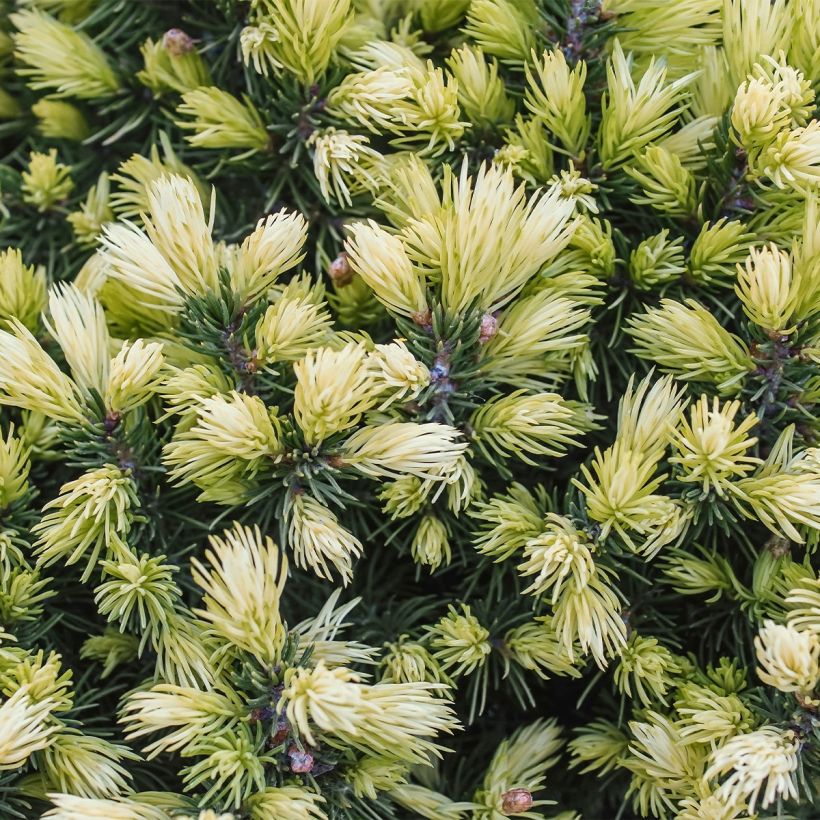

Plant habit
Foliage
Botanical data
Picea
glauca
Sun on the Sky
Pinaceae
White Spruce, Canadian Spruce, Skunk Spruce, Cat Spruce, Black Hills Spruce, Western White Spruce, Alberta White Spruce, Porsild Spruce
Cultivar or hybrid
Other Picea
View all →Planting and care
Plant from September to November and from February to April in deep, well-drained, light, preferably neutral or slightly acidic, occasionally moist to dry soil. A sandy or rocky soil that is not too chalky will be perfectly suitable. Choose a rather sunny location sheltered from prevailing winds. In excessively sunny and dry conditions, it will be more susceptible to attacks from red spider mites. Water the root ball well before planting, or even better, soak it in a bucket of water for 15 minutes to moisten it well. Add organic matter at planting and water generously in the first few years, and in case of prolonged drought. Apply a special conifer fertiliser every year in April and cultivate the soil in summer. This extremely hardy conifer fears heavy, waterlogged soils in winter. Pruning is not necessary; you can simply lightly trim the periphery if necessary to perfect its conical habit.
Planting period
Intended location
Care
Planting & care advice
This item has not been reviewed yet - be the first to leave a review about it.
Similar products
Haven't found what you were looking for?
Hardiness is the lowest winter temperature a plant can endure without suffering serious damage or even dying. However, hardiness is affected by location (a sheltered area, such as a patio), protection (winter cover) and soil type (hardiness is improved by well-drained soil).

Photo Sharing Terms & Conditions
In order to encourage gardeners to interact and share their experiences, Promesse de fleurs offers various media enabling content to be uploaded onto its Site - in particular via the ‘Photo sharing’ module.
The User agrees to refrain from:
- Posting any content that is illegal, prejudicial, insulting, racist, inciteful to hatred, revisionist, contrary to public decency, that infringes on privacy or on the privacy rights of third parties, in particular the publicity rights of persons and goods, intellectual property rights, or the right to privacy.
- Submitting content on behalf of a third party;
- Impersonate the identity of a third party and/or publish any personal information about a third party;
In general, the User undertakes to refrain from any unethical behaviour.
All Content (in particular text, comments, files, images, photos, videos, creative works, etc.), which may be subject to property or intellectual property rights, image or other private rights, shall remain the property of the User, subject to the limited rights granted by the terms of the licence granted by Promesse de fleurs as stated below. Users are at liberty to publish or not to publish such Content on the Site, notably via the ‘Photo Sharing’ facility, and accept that this Content shall be made public and freely accessible, notably on the Internet.
Users further acknowledge, undertake to have ,and guarantee that they hold all necessary rights and permissions to publish such material on the Site, in particular with regard to the legislation in force pertaining to any privacy, property, intellectual property, image, or contractual rights, or rights of any other nature. By publishing such Content on the Site, Users acknowledge accepting full liability as publishers of the Content within the meaning of the law, and grant Promesse de fleurs, free of charge, an inclusive, worldwide licence for the said Content for the entire duration of its publication, including all reproduction, representation, up/downloading, displaying, performing, transmission, and storage rights.
Users also grant permission for their name to be linked to the Content and accept that this link may not always be made available.
By engaging in posting material, Users consent to their Content becoming automatically accessible on the Internet, in particular on other sites and/or blogs and/or web pages of the Promesse de fleurs site, including in particular social pages and the Promesse de fleurs catalogue.
Users may secure the removal of entrusted content free of charge by issuing a simple request via our contact form.
The flowering period indicated on our website applies to countries and regions located in USDA zone 8 (France, the United Kingdom, Ireland, the Netherlands, etc.)
It will vary according to where you live:
- In zones 9 to 10 (Italy, Spain, Greece, etc.), flowering will occur about 2 to 4 weeks earlier.
- In zones 6 to 7 (Germany, Poland, Slovenia, and lower mountainous regions), flowering will be delayed by 2 to 3 weeks.
- In zone 5 (Central Europe, Scandinavia), blooming will be delayed by 3 to 5 weeks.
In temperate climates, pruning of spring-flowering shrubs (forsythia, spireas, etc.) should be done just after flowering.
Pruning of summer-flowering shrubs (Indian Lilac, Perovskia, etc.) can be done in winter or spring.
In cold regions as well as with frost-sensitive plants, avoid pruning too early when severe frosts may still occur.
The planting period indicated on our website applies to countries and regions located in USDA zone 8 (France, United Kingdom, Ireland, Netherlands).
It will vary according to where you live:
- In Mediterranean zones (Marseille, Madrid, Milan, etc.), autumn and winter are the best planting periods.
- In continental zones (Strasbourg, Munich, Vienna, etc.), delay planting by 2 to 3 weeks in spring and bring it forward by 2 to 4 weeks in autumn.
- In mountainous regions (the Alps, Pyrenees, Carpathians, etc.), it is best to plant in late spring (May-June) or late summer (August-September).
The harvesting period indicated on our website applies to countries and regions in USDA zone 8 (France, England, Ireland, the Netherlands).
In colder areas (Scandinavia, Poland, Austria...) fruit and vegetable harvests are likely to be delayed by 3-4 weeks.
In warmer areas (Italy, Spain, Greece, etc.), harvesting will probably take place earlier, depending on weather conditions.
The sowing periods indicated on our website apply to countries and regions within USDA Zone 8 (France, UK, Ireland, Netherlands).
In colder areas (Scandinavia, Poland, Austria...), delay any outdoor sowing by 3-4 weeks, or sow under glass.
In warmer climes (Italy, Spain, Greece, etc.), bring outdoor sowing forward by a few weeks.






























